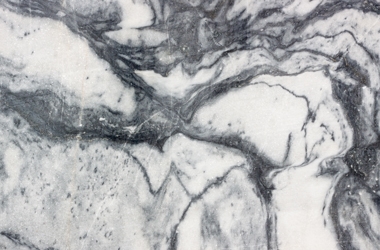How to clean marble flooring
A natural stone floor shouts elegance and style with a graceful touch of opulence. Seen in grand halls, sensational lobbies and featuring heavily throughout the most luxurious architecture in the world, natural stone turns the ordinary into something quite remarkable. In the case of marble, the classic, timeless appearance coupled with the naturally occurring and unique markings has kept marble as one of the most sought after flooring options in the world.
Marble floor, once rare and exotic, offered a deeply sought after European style which many associated with royalty or the wealthiest. Nowadays, however, marble is accessible from most flooring specialists and is available to be installed in a variety of forms from flat seamless slabs to custom cut tiles. It is, of course, for these reasons, marble floor is now more popular than ever.
What is marble?
Marble is a metamorphic rock. This essentially means that it has been modified by a number of factors including heat, pressure and chemical processes. Marble needs a variety of minerals to become the rock you see in stunning lobby areas or fashioned into seating so therefore forms when limestone is manipulated by the heat, pressure and chemical processes as mentioned above.
Marble is made mainly of the mineral calcite (CaCO3) amongst other minerals such as clay, quartz, iron oxides and graphite to name a few.
Because of the natural make-up of marble, you should never, ever use acidic based cleaning products as they will cause irreparable damage. As an example, a while back I decided to cut limes on a marble breadboard – the next morning the top had crystalised and turned white causing a dulling I could never return back to its original shine. Moral of the story, stay well away from acidic solutions (and definitely don’t decide to slice citrus fruits on your beautiful, Italian marble floor!)
Cleaning marble flooring – the DON’TS
Don’t use bleach! Bleach doesn’t tend to remove much on marble apart from its marvellous , natural colour. In some instances, it can also end up embedding stains into marble permanently.
Don’t use strong alkalis! As acids and bleach are a no go when cleaning marble you could be forgiven for reaching for a strong alkali solution but this can also have detrimental effects on the flooring. If you do use a strong alkali it is much more likely to affect the surface of the marble rather than actually tackle the dirt and stains.
Don’t go for home made or traditional solutions of vinegar or lemon as these will gradually degrade the marble surface and leave the marble liable to easy staining.
Don’t use products that contain abrasives! These thick solutions claim to agitate dirt from the surface through friction but they will cause microscopic scratches and pores which will attract fresh dirt making onward cleaning a lot harder and more frequent.
How to clean marble flooring
Start the cleaning process by sweeping to remove loose dust and dry dirt. When cleaning marble it is also crucial to remember that you will always need to dry it straight after cleaning. Leaving water to evaporate on the marble can lead to permanent damage.
It is important to not experiment with different home made mixes as you can never be sure which ingredients can cause damage. Ideally you need to use a cleaning solution that is pH neutral or as close to neutral as possible. There are a wide variety of cleaning products made specifically for cleaning marble on the market, however, in most cases when maintaining marble you can use just water to keep the surface clean. The best thing about using water is that it will never leave a residue on the marble surface, and as long as it is properly dried afterwards, will not cause any damage.
There are a number of machines and tools to clean marble however the mop is still the most common. If you are using a rope mop, use shorter, overlapping strokes ensuring to not over-wet the floor. If you are using a machine or tool, always follow manufacturer’s guidance.
If you come across stains and floor marks treat them individually and take your time to ease them out. Use a microfiber cloth or felt pad along with a diluted, marble safe cleaning product or pH neutral detergent. Always ease the mark out by rubbing in a straight line as a circular motion can leave additional scuffs and markings.
How to maintain marble flooring
- If it hasn’t been done already – seal the marble floor. As marble is a naturally porous material, it will continue to absorb moisture and liquids which can lead to staining. Using a high quality sealant, which is re-applied every 6 to 12 months will prolong the life of a marble floor and help you avoid causing long term damage from spillages and tracked in liquid.
- Use entrance matting. If your marble floor sees heavy, daily footfall ensure you have correct entrance matting in place to limit the amount of dirt that can be tracked in and across the floor.
- Install umbrella racks just outside or on the barrier matting. This way, you encourage visitors to leave their dripping wet umbrellas at the door and not carry them across the floor.
- If food and drink is served nearby ensure rugs are placed strategically on the floor to catch spillages in accident-prone areas.
By following the advice in this article you are sure to maintain your marble floor and keep it looking as dazzling and elegant as it should be.
If you’re looking for a self contained method to both clean and dry your marble floors then you might find the i-mop cordless scrubber dryer useful. This groundbreaking scrubber dryer has the flexibility of a flat mop which can scrub and dry at the same time meaning your marble floors are always left clean, dry and buffed to a high standard. To find out more, search i-mop scrubber dryer.

